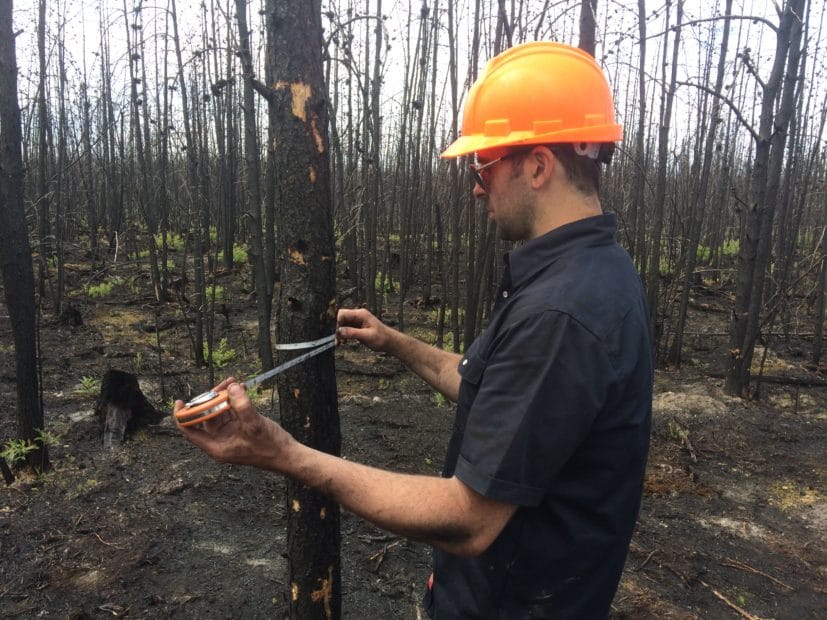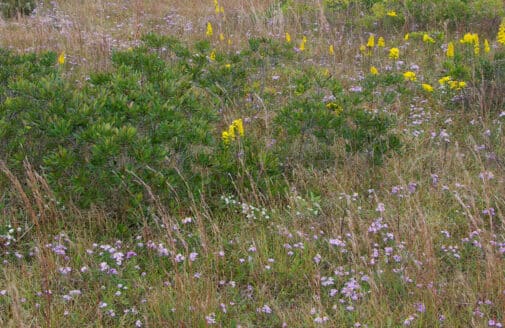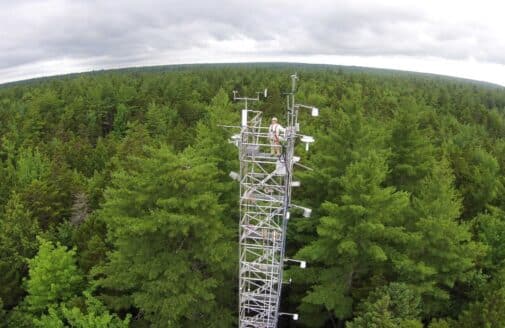Fuels, not fire weather, control carbon emissions from boreal forest fires

Dr. Brendan Rogers analyzes a fire site in Saskatchewan, Canada
The amount of available fuel is the biggest predictor of how much carbon will combust in boreal forest fires, according to the surprising findings of a new study published in Nature Climate Change by a team of researchers that included Woodwell Climate Research Center scientist Dr. Brendan Rogers. Fire weather—such as drought conditions, temperature, or rain—and the time of year a fire burns have traditionally been considered the leading indicators of carbon combustion, but researchers found the carbon stored below-ground in soil organic matter was the most important predictor of how much carbon a fire will release.
“These data show that two fires of the same size can have very different carbon emissions. Boreal forests are anything but homogeneous, and available fuels have a huge influence. It’s an important advancement for our ability to understand and predict how intensifying boreal fire regimes impact the global carbon cycle and influence carbon budgets,” said Dr. Rogers.
The team surveyed the vast Western Boreal’s diverse forest conditions by analyzing field data collected from 417 burn sites in six eco-regions in Canada and Alaska between 2004-2015. They measured the carbon released from each site, and examined available fire weather data from the time of the fires. The vegetation patterns they uncovered were complex—soil moisture, tree species composition, and stand age at the time of fire all interacted to predict combustion amounts. For instance, highly flammable black spruce was generally a strong predictor of carbon emissions, and black spruce tended to occupy poorly drained and older forests. Weather patterns preceding and during the fire, however, did not offer much explanatory power.
“In these northern forests, soil, not trees, can account for up to 90 percent of carbon emissions, so we expected that these organic soils would be a significant driver,” said lead author Xanthe Walker of the Center for Ecosystem Science and Society at Northern Arizona University. “But we were surprised that fire weather and the time of year a fire starts proved to be poor indicators of carbon combustion. It’s really about the fuels that are there when a fire starts.”
“That said, we know that fire weather is still a major determinant of when and where fires burn, as evidenced by this past summer’s record fire season in Siberia. It’s one of the reasons we’re so concerned about rapidly increasing temperatures in these high latitude ecosystems,” said Dr. Rogers. “A major next step is to predict how fires will interact with warming to change forest composition, as well as to better understand how and where fires lead to long-term permafrost degradation. We also hope to use this information to create carbon vulnerability maps for fire managers that could help them prioritize lands for carbon protection.”
This work was supported by funding from the NASA Arctic Boreal and Vulnerability Experiment (ABoVE), the National Science Foundation RAPID program and Bonanza Creek LTER, the Natural Sciences and Engineering Research Council of Canada, the Government of the Northwest Territories Cumulative Impacts Monitoring Program; Polar Knowledge Canada’s Northern Science Training Program; and Vidi grant support from the Netherlands Organization for Scientific Research (NWO).







